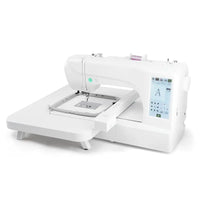Learn the insider techniques that pros use to judge fabric quality, stitching standards, and fit precision. This visual checklist, distilled from FittDesign TV’s in-depth episode, walks you through how to inspect every element of a garment prototype—before production begins.
Table of Contents
- Understanding the Prototype: Your First Line of Defense
- Fabric Focus: Beyond the Surface
- The Art of the Stitch: Examining Construction Quality
- Details Matter: Ornamentation and Hardware
- The Perfect Fit: Adherence to Your Vision
- The Hidden Quality Indicator: Grainline Analysis
- Final Verdict: Making Informed Production Decisions
Understanding the Prototype: Your First Line of Defense
Every garment journey starts with the prototype — your tangible test of commitment from the manufacturer. Watch carefully for initial clues: common issues begin even before stitching.

Prototypes often arrive in neutral hues such as black, white, or grey. This isn’t corner-cutting; it’s practicality. Factories use readily available fabrics in the correct composition when testing structure, not color.

Fabric Focus: Beyond the Surface
Touch is data — the first signal of authenticity.

A designer’s touch distinguishes what’s right from wrong in just seconds. Feel the material: does it express the soft, peach-like finish you wanted, or is it slicker and unnatural? Tiny sensory notes often reveal whether the factory substituted cheaper yarn batches.
In professional settings, many designers use specialized hoops or frames to stabilize materials during close inspection of knit tension, similar to gripping textile in a magnetic embroidery hoop to keep surfaces even for comparison.
Weight and Color Consistency Checks
The next measurement step involves translating feel into facts. Compare your fabric’s weight to the spec sheet: a half-weight discrepancy instantly compromises durability.

Hold pieces to the light and check for blotches or chemical shading. Consistency matters not only for aesthetics but also credibility. A slight shade shift — darker ribbed hips versus lighter panels — hints at disorganized dye management.

The Art of the Stitch: Examining Construction Quality
Strong seams are silent marketers of quality.

Evaluate each hemline: no loose threads, no skipped stitches. Slide a finger along the seam to detect irregular bumps or hard knots. These micro-imperfections translate into macro issues once customers move in your garments.
When training teams in-house, professionals sometimes demonstrate stability using compact tools akin to mighty hoop embroidery setups to simulate tension consistency across materials.
Seam Density and Stretch Performance
Count stitches per inch (SPI) — 8 to 12 is the golden standard. Anything less suggests corner cutting; anything higher could stiffen delicate fabrics.

Apply horizontal and vertical stretch tests. The sample should endure 1.5x to 2x extension without snapping, especially in activewear like leggings.

For monitoring metrics, a measuring tape positioned on the seam (as in

) verifies that density holds through entire runs.
A quick flex test (see

) gives a preview of comfort and durability. If seams twist or whiten under tension, re-spec your construction method.
Details Matter: Ornamentation and Hardware
Surface decoration and hardware define brand luxury.

For prints, confirm the correct process: embroidery must not be replaced with a cheaper heat transfer unless justified. When logos crack under stretch, durability fails.

Zipper and Drawstring Functionality
Hardware is tactile storytelling. Zippers should glide, not grind; pull them repeatedly to test integrity.

Check that drawstrings meet expected thickness and that metallic aglets resist rust or separation.

From the comments: Dozens of viewers praised this hardware section, describing it as “informative” and “super detailed,” proof that even tiny trims can elevate manufacturing credibility.
In practice, using small framed holding tools like magnetic embroidery frames during inspection can stabilize garment corners for accurate viewing under magnifiers.
The Perfect Fit: Adherence to Your Vision
Measurements are math-backed artistry. Compare every dimension to your fit reference. Outseam variances of more than ±0.5 inches or waist differences over ±0.25 inches demand revision.
When verifying fit, spread your garment flat on a level board — much as you might prepare fabric under a baby lock magnetic hoop system, where even distribution ensures reliable data capture through the entire pattern.
If shape distortion appears where panels join, note the error before proceeding with production rather than adjusting post-sampling.
The Hidden Quality Indicator: Grainline Analysis
Every woven or knit textile follows a rhythm, a directional thread movement known as the grainline. For knitwear, these lines must stay perfectly vertical on the torso and horizontal on sleeves when laid flat.
A simple tilt of just a few degrees, done to economize fabric, reveals rushed cutting practices that destroy drape and form. Precision cutting like

illustrates compliance with proper alignment.
From a viewer’s note at 11:40: small insights here earned praise as “good info,” reflecting how rarely grainline education appears in mainstream fashion channels.
Even embroiderers know how crucial fabric alignment is — skewed stabilizing in frames such as magnetic embroidery hoops can distort entire patterns. The concept parallels sample evaluation: alignment equals quality.
Final Verdict: Making Informed Production Decisions
By the end of your prototype inspection, you’ve measured texture, color, stitch, seam, hardware, and fit. Synthesize results into a structured evaluation sheet. If multiple grades fall below spec, do not proceed to full bulk; communicate issues clearly to your manufacturer.
For teams documenting each test digitally, structured photography under mounted setups similar to dime magnetic hoops ensures consistent scale and angle across sample shots.
Remember, effective evaluation protects budgets and reputations. As seen across thousands of appreciative viewer comments, adopting these checks fortifies trust among buyers and designers alike.
From the Comments: The comment section for this episode overflowed with enthusiasm — “superb,” “very informative,” “detailed,” and “outstanding evaluation process.” The collective takeaway: attention to detail transforms average samples into production-ready pieces.
Stay diligent, document every check, and empower your team to treat each prototype as the final rehearsal before your big fashion debut.



